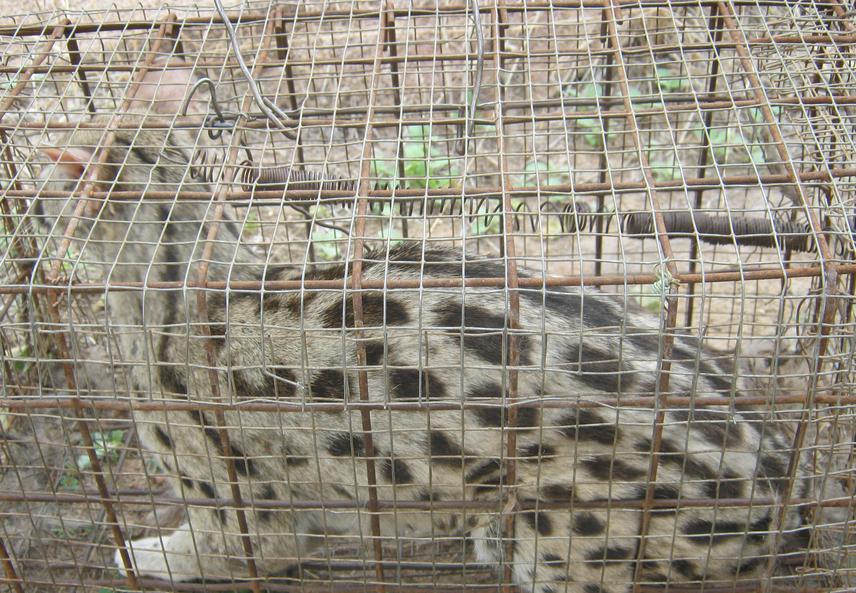Alphonse Modestus Msigwa
The project aim to determine distribution, relative abundance, diversity, habitat use, activity patterns and threats of small mammalian carnivores across land use

Trapped small carnivore.
The Ruaha ecosystem in Central Tanzania has an area of approximately 45,000 km2 and is one of the essential areas for wildlife conservation and management principally carnivores. The ecosystem encompasses Ruaha National Park with an area of 20 000 km2, Game Reserves like Muhezi, Kisigo and Rungwa and Wildlife Management Areas such as Waga, UMEMARUA and MBOMIPA. The area has outstanding biodiversity and species endemism and has international ecological significance as the only ecosystem which represents transitional vegetation between East African Acacia-Commiphora zones to the Southern African Brachystegia or miombo zone. According to Tanzania Wildlife Research Institute (TAWIRI) on carnivore conservation action plan of 2009 highlighted Ruaha ecosystem as important area supporting valuable number of Serval, Caracal, Wild cat and other Small Mammalian Carnivores (SMC). Despite of that, still the area has paucity of data on the distribution, abundance and diversity of SMC which consequently hold back the management plans. There for with the support from Rufford foundations, this one year project intents to collect baseline data of SMC in the park and MBOMIPA WMA.
The project goal is to understand the ecology and role of land use in affecting SMC distribution, abundance and diversity. Also the study will assess activity patterns, habitats use and establishing cause and effects that threaten them in Ruaha ecosystem using camera trap as the method is predominantly usefully in gathering information on SMC as they are nocturnal, cryptic and arduous to observe. Cameras will be fixed in trees at a distance of 20 - 30 cm from the ground with 1km apart, operating 24hrs day-1for consecutively 30 nights. In addition to that focal searching of live animals, their sign and habitat identifications will be documented. The Data will be analyzed using statistical analyses (SAS 9.3). Two-tailed probability results <0.05 will be considered statistically significant and paired t test will be used to compare activity patterns across land use and describing using descriptive statistics such as tables and group bar graphs. The information will be shared with different stakeholders through posters, scientific conferences presentations, journals and forums. The project future plan is to continue studying SMC across the entire ecosystem for better understanding of their ecology and demography so as to have sound management plan.